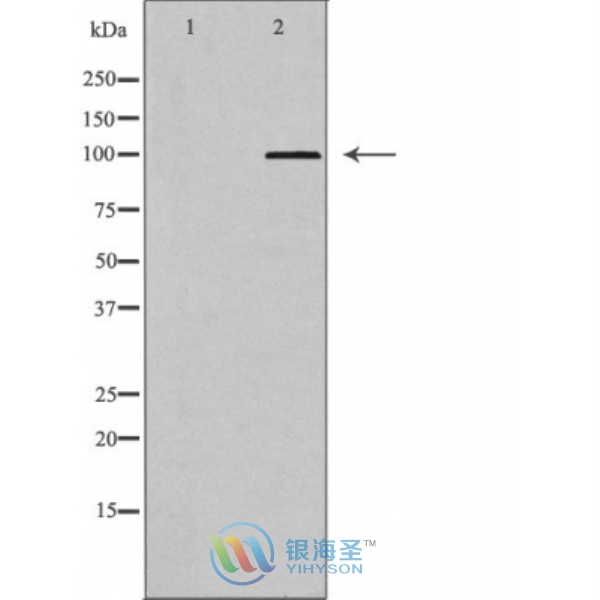ARP2892-61
[Polyclonal Antibody]
GRIA3 Rabbit Polyclonal Antibody

www.yhsbio.com
market@yhsbio.com
support@yhsbio.com
+86-21-54651191
Room 703,Building 6,333# Guiping
Rd.,Xuhui District,Shanghai,China
market@yhsbio.com
support@yhsbio.com
+86-21-54651191
Room 703,Building 6,333# Guiping
Rd.,Xuhui District,Shanghai,China
DATASHEET
| Species: | Rabbit |
| Applications: | WB IHC |
| Immunogen Range: | A recombinant protein of human GRIA3 |
| Clonality: | Polyclonal Antibody |
| Isotype: | IgG |
| GENE ID: | 2892 |
| Swiss Prot: | P42263 |
| Synonyms: | GLUR3, GLURC, GluA3, MRX94, GLUR-C, GLUR-K3 |
| Purification: | Affinity purification |
| Storage: | Store at -20°C or -80°C in PBS with 0.02% sodium azide and 50% glycerol. Avoid freeze/thaw cycles. |
| Background: | AMPA- (α-amino-3-hydroxy-5-methyl-4-isoxazolepropionic acid), kainite- and NMDA- (N-methyl-D-aspartate) receptors are the three main families of ionotropic glutamate-gated ion channels. AMPA receptors (AMPARs) are comprised of four subunits (GluR 1-4) that assemble as homo- or hetero-tetramers and mediate the majority of fast excitatory transmissions in the CNS. AMPARs are implicated in synapse formation, stabilization and plasticity. Post-transcriptional modifications (alternative splicing and nuclear RNA editing) and post-translational modifications (glycosylation, phoshorylation) result in a very large number of permutations, fine-tuning the kinetic properties of AMPARs (1). GluR 3 knockout mice exhibited normal basal synaptic transmission and long-term depression (LTD) but enhanced long-term potentiation (LTP). In contrast, GluR 2/3 double knockout mice are impaired in basal synaptic transmission (2). Aberrant GluR 3 expression or activity is implicated in a number of diseases, including autoimmune epilepsy, X-linked mental retardation, Rett's syndrome, amyotrophic lateral sclerosis and Alzheimer disease (3). |
| Caculated MW: | 101 kDa |
| Observed MW: | Refer to Figures |
| Applications: |
WB 1:500-1:2000 IHC 1:50-1:200 |
| Reacitivity: | Human, Mouse, Rat |
For research use only. Not intended for diagnostic or therapeutic use!
Additional information
